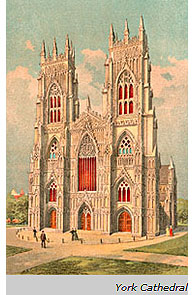An early History of Freemasony which refutes the Transition Theory.
 The transition theory of masonic history holds that men not actively involved in the operative mason’s trade were admitted to operative masons' lodges and, as the mason’s trade declined, these outsiders took control of lodges. Little proof exists in support of this theory although it was held in high regard during the 19th century and through much of the twentieth.
The transition theory of masonic history holds that men not actively involved in the operative mason’s trade were admitted to operative masons' lodges and, as the mason’s trade declined, these outsiders took control of lodges. Little proof exists in support of this theory although it was held in high regard during the 19th century and through much of the twentieth.
With one exception there is no evidence that any non-operative was ever admitted to an operative lodge in England. Although some Scottish lodges changed from an operative to non-operative basis, none are evident in England. The following comprise practically all masonic references prior to 1717.
Although not a masonic reference the earliest reference to secret societies was the Decree XXXVII, columns 763-4, vol. 25 of the "Concilium Avenionense" of 1326, in which the Church attacks secret societies, describing them with such words as: fraternal assistance, signs, tokens, obligations and election of Masters.
The first record of an initiation in an English lodge is 16 October 1646 when Elias Ashmole noted in his diary that he and a Colonel Henry Mainwaring had been initiated into a non-operative lodge. He doesn't mention the lodge again until 11 March 1682..
The "Old Charges" are manuscripts setting out regulations for the operative mason’s trade and read at meetings. The oldest and most often referred to in non-operative lodge lectures are:
Regius Poem |
1390 c. |
Cooke Manuscript |
1410-25 |
Grand Lodge MS No. 1 |
1583 |
Melrose No. 1 MS |
1581 |
There is no extant ritual, minutes or descriptions and no primary evidence of masonic activity in the 17th century. There is a list of 27 members of a lodge in Chester dated 1673 and one Edward Hall claimed initiation into Chichester lodge in 1695 but there are no other records of either lodge. The York No. 4 MS of 1693 names six members of a lodge of which nothing else is known.
William Hutchinson in his The Spirit of Freemasonry (1775), with Grand Lodge official sanction, rejected any direct lineage to operative masons. But many masons continue to accept that lineage.
There is a possibility of simultaneous operative guild masonry and the speculative Craft in the 17th century. It is possible that associations became non-operative after the cessation of church building around 1540; it should be noted that nine lodges founded in the 18th century bear the word "Operative" in their names to this day. It is possible that the dissolution of the monasteries played a role. It is also possible that there are multiple sources.
The documented history of Craft Freemasonry starts in 1717. The Grand Lodge of England, nicknamed "the Grand Lodge of the Moderns," was founded on 24 June 1717 while the Grand Lodge of England, nicknamed "the Grand Lodge of the Antients," was founded on 17 July 1751. Their union on 25 November 1813 laid to rest the claim that the Antients were schismatic when, in fact, there was demonstrated lineage to the Grand Lodge of Ireland.
The Union of 1813 also marked the close of Craft Freemasonry in England as a Christian association. The Duke of Sussex, elected Grand Master annually until his death in 1843, proclaimed freemasonry to be universal and removed all Christian references from the lectures and ritual. He encouraged appendant bodies and the Royal Arch to pursue a Christian course but maintained the universality of the three Craft degrees.
Excerpted from "The Origin of Freemasonry (A New Theory)" by C.N. Batham and appended commentaries. Ars Quatuor Coronatorum Transactions of Quatuor Coronati Lodge No. 2076. vol. 106 (1993), ed. Robert A Gilbert. Great Britain: 1993. pp. 16-50. Further information on the "Concilium Avenionense" of 1326 can be found in AQC vol. 87 (1974), Jean Heineman.
Further argument for the transition theory is supplied by Leader Scott (Lucy E. Baxter) in The Cathedral Builders, published in 1899. Also see Dr. Wallace McLeod's defense of the Transition Theory.

The actual origins of Freemasonery have been lost in time, but is understood to have ... [more]

Share a concern and respect for human values, moral standards, the laws of society and... [more]

Is an organization that embraces confidentiality but is not a secret society ... [more]

So...you want to join the fraternity? ...[more]
Have you donated blood today? Tell us about your donation...[more]